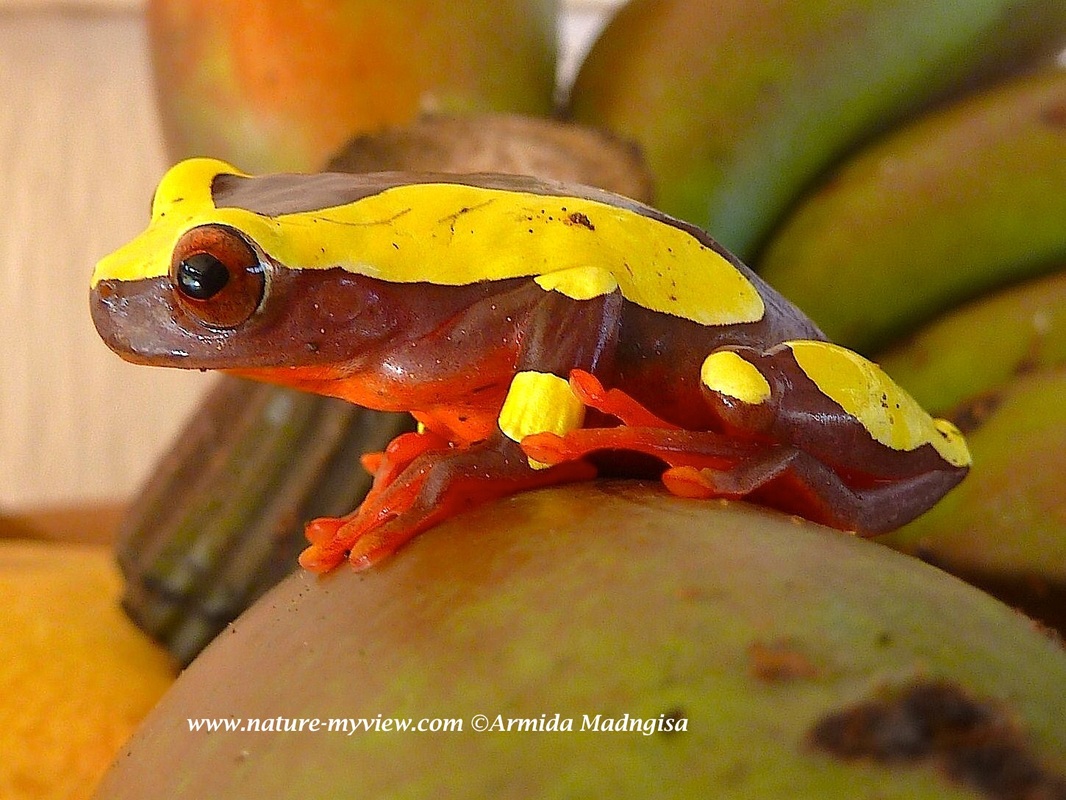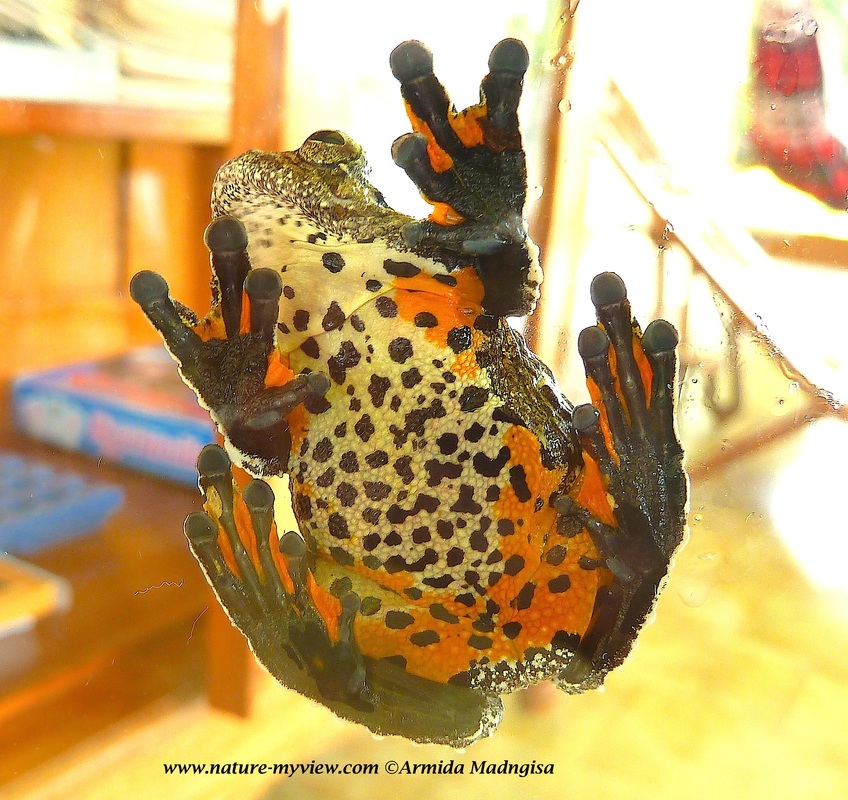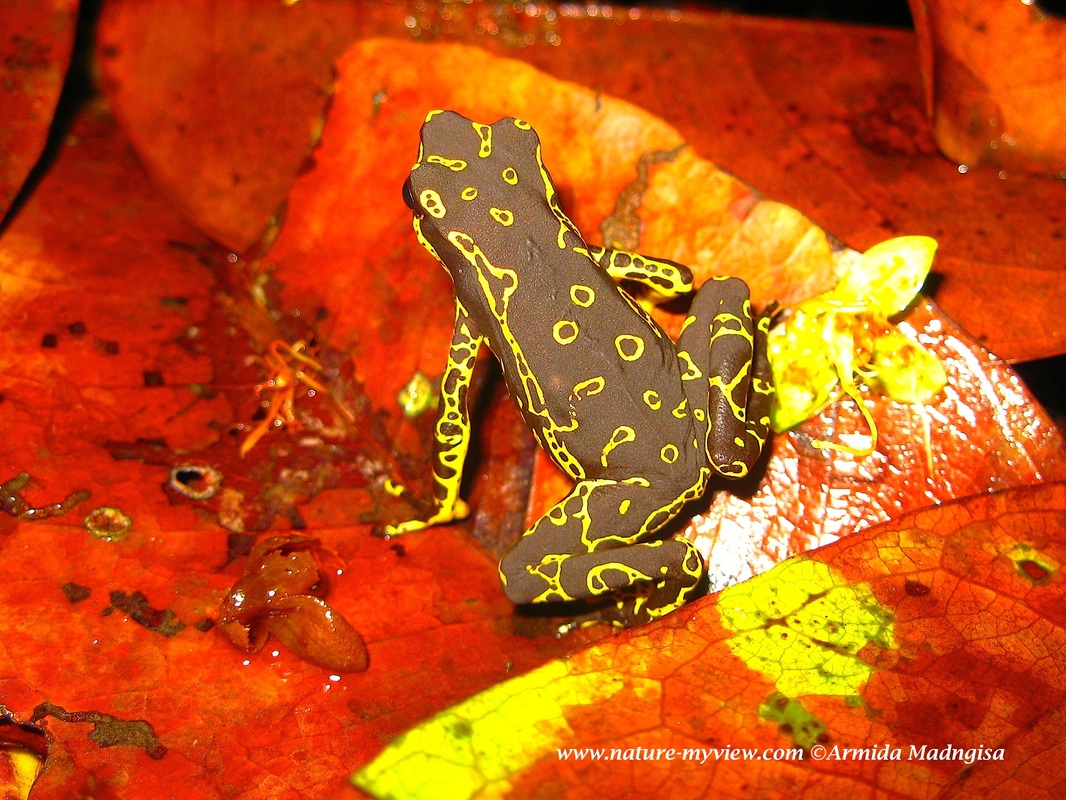|
When you think of rain, you'll think of the cloudy cold weather and soaking or muddy trails. Meaning ... a perfect time to stay inside and skip the outdoor walk. Of course it will spare you the muddy boots and soaking wet clothes, but it means that you will also miss meeting the amphibian world. Amphibians, in this case toads and frogs, appear easily on the surface during the rainy season or whenever there is a heavy rainfall. This doesn't mean that they vanish in mid air when it is too hot and the area too dry. No, they hide at cool and moist places. Usually under leaves or fallen logs. Before I came to work in Kabalebo, I knew absolutely nothing about amphibians. The only thing that I knew was that they were slimy and I didn't like them at all. I guess I got my '180 degrees turn' education in Kabalebo. Here is where I started to learn about different species: Toads, Poison Frogs, Leaf Frogs, Tree Frogs, Jungle Frogs ....... their world is so big and that for such tiny creatures. Some familiar species I've met and left a great impression behind are: 1. The Three - Striped Poison Frog (Ameerega trivittata): this was my first poison frog I photographed. A very common one, you can find them at any hiking trail in Kabalebo. I learned that the male carries the tadpoles on his back and then releases them in a puddle in the forest. 2. South American Bullfrog or Smoky Jungle Frog (Leptodactylus pentadactylus): I am just amazed by its appearance. There are some that are living nearby my house. 3. Beireis Tree frog or Clown Tree frog (Dendropsophus leucophyllatus): beautiful colors. One of my favorite tree frogs. 4. Marbled Tree frog (Dendropsophus marmoratus): I've actually found this one sleeping on a leaf. I like its camouflage a lot. On its back it's grey/white, but underneath .... 5. Dyeing Poison Frog (Dendrobates tinctorius): great colors everywhere. I've seen this one only at a hiking trail called Kilo 3, near small streams. 6. Hoogmoed Harlequin Toad (Atelopus hoogmoedi): also only seen at Kilo 3, just like the Dyeing Poison Frog. Usually rest on moss near streams. I usually have to look very closely as this one doesn't jump but crawls very slowly. 7. Giant Monkey Frog (Phyllomedusa bicolor): I always wonder why this tree frog is called monkey frog .... This one has a fresh pop out color: green/white. It has a great face impression too. These frogs are just a fraction that I met so far of the Amphibian world of Kabalebo. These are the ones that I've seen frequently on certain places and that I easily can identify.
There are still more out there in the jungle that I still need to identify, but only time will tell. For sure the jungle is one big place where the learning and discovering of new things shall never stop ..... and that is what actually inspires me to continue. Comments are closed.
|
Archives
June 2024
Categories
All
|









 RSS Feed
RSS Feed